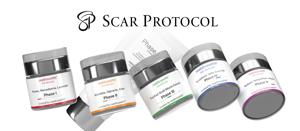
A team of researchers at Columbia Engineering has developed a revolutionary membrane that could transform hydrogen production by eliminating harmful per- and polyfluoroalkyl substances (PFAS) from the process. As the global hydrogen industry, valued at approximately $250 billion, relies heavily on carbon-intensive methods, this breakthrough in membrane technology aims to make hydrogen production cleaner and more sustainable.
The traditional method for producing hydrogen primarily involves water electrolysis, where electricity drives a reactor, known as an electrolyzer, to split water (H2O) into hydrogen (H2) and oxygen (O2). This process requires a specialized membrane that allows only positively charged hydrogen ions, or protons, to pass through while separating the oxygen and hydrogen gases. Currently, the industry standard for this membrane is Nafion, a PFAS-based material known for its environmental persistence and toxicity.
Dan Esposito, an associate professor of chemical engineering at Columbia, leads this innovative project in collaboration with industrial partners Nel Hydrogen and Forge Nano. Together, they are replacing Nafion membranes with ultra-thin, PFAS-free oxide membranes, thereby reducing the PFAS content in electrolyzers by over 99%.
Advancements in Membrane Technology
The membrane plays a critical role in the efficiency and safety of electrolysis systems. Esposito emphasizes its importance, stating, “If it fails, the system doesn’t work, and it can even become dangerous.” The researchers have published their findings in the journal ACS Nano, detailing their novel approach to manufacturing these thin membranes while addressing safety concerns.
Historically, silicon dioxide, the chosen alternative material, was viewed as inferior due to its lower proton conductivity compared to Nafion. However, advancements in nanoscale manufacturing have led to the development of membranes significantly thinner than the current standard. Typically, Nafion membranes measure around 180 microns, while the new oxide membranes created by Esposito’s team are less than 1 micron thick, making them 100 times thinner than a human hair.
Despite the lower conductivity of silicon dioxide, the drastic reduction in thickness allows the new membranes to perform effectively. “Resistance depends not only on the conductivity but also on thickness,” Esposito explains, highlighting the innovative nature of their work.
Addressing Safety Challenges
Thin membranes introduce potential safety challenges, particularly concerning defects such as microscopic pinholes that can lead to hazardous hydrogen leakage. To combat this, the team devised an electrochemical method to seal these defects selectively. By applying pulsed voltage, they can trigger reactions that deposit tiny “plugs” within the holes, maintaining the membrane’s thinness and low resistance.
Laboratory tests have shown promising results, with the new membranes exhibiting hydrogen crossover rates up to 100 times lower than traditional Nafion membranes, despite their significantly reduced thickness. As the project progresses, Nel Hydrogen and Forge Nano are assisting in scaling the technology from initial centimeter-scale tests to larger prototypes suitable for commercial use.
While the primary focus remains on enhancing hydrogen production, Esposito envisions broader applications for this defect-plugging strategy. Potential uses could extend to fuel cells, flow batteries, water treatment, and semiconductor manufacturing.
Looking ahead, Esposito notes, “Right now, less than 0.1% of global hydrogen comes from electrolysis. If we want to scale that up sustainably, we need membranes that are both high-performing and environmentally responsible.” The team is committed to advancing technology that not only enhances efficiency but also prioritizes environmental sustainability in hydrogen production.






